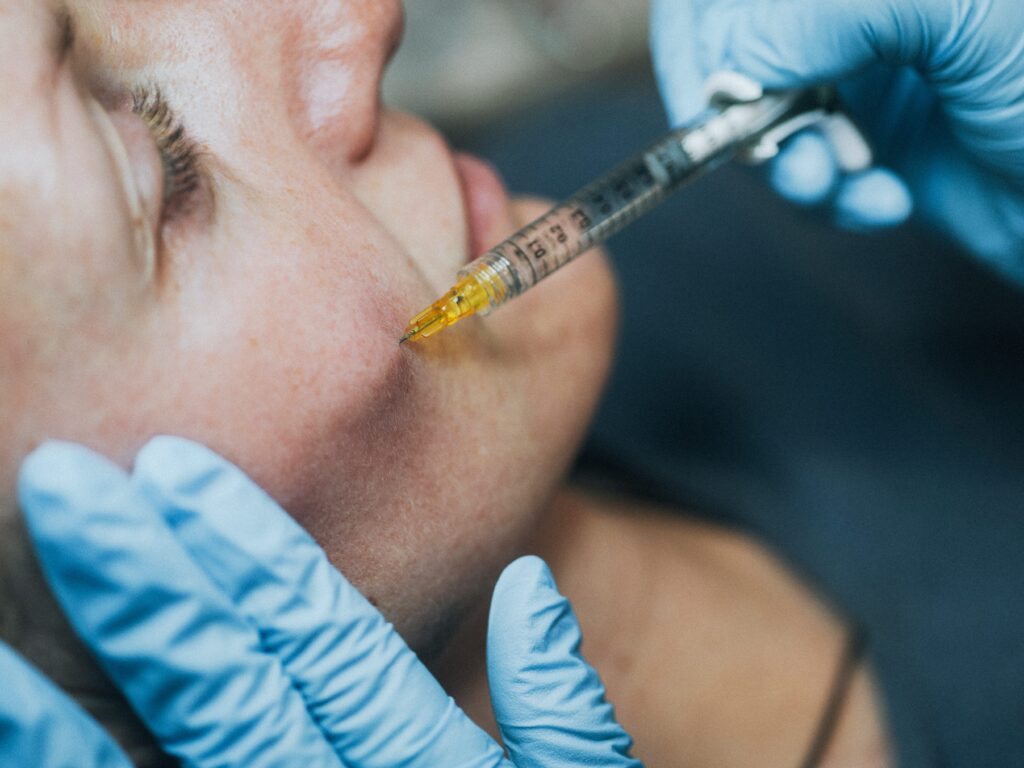- A cosmetic dermatologist explained why he coined the term “Ozempic face,” named after the buzzy weight loss drug.
- “Ozempic face” occurs when a patient loses a lot of fat quickly, causing their skin to sag.
- Treatment can include injecting fillers all around the face.
People taking the buzzy weight loss drug Ozempic might notice slimmer arms and a flatter stomach, but the rapid weight loss is leading to a major unintended consequence: “Ozempic face.”
Dr. Paul Jarrod Frank, a cosmetic dermatologist who has worked with celebrities, said he coined the term “Ozempic face” after many of his middle-aged patients would come in with gaunt faces after losing a lot of body weight in a short period of time while on the weight loss drug.
Many patients reported rapid weight loss after taking semaglutide, a “game changer” injectable drug that helps the body manage blood sugar.
Doctors prescribe the drug, approved by the Food and Drug Administration in 2017 to help manage type 2 diabetes, and in 2021 to treat obesity. Brand names for the drug include Ozempic and Wegovy.
But some have speculated that many, including Hollywood stars, are taking the drug off-label. High demand was linked to shortages late last year. Elon Musk, Chelsea Handler, and TikTok star Remi Bader have all admitted to taking the drug.
Though the drug can help with weight loss, Frank said his patients are losing excessive fat from their face, resulting in a hollowed out cheeks and a deflated look. He treats "Ozempic face" by inserting fillers to revolumize the face, but said too many injections can create an unnatural look.
"I think a combination of age and the rapidity of the weight loss is what's causing what I call 'Ozempic face,'" Frank told Insider. "When you meet someone that you saw not too long ago and they've [suddenly] lost a lot of weight, particularly in that area, it's kind of like a telltale sign."
The trend is more common among people 40 and older, Frank said, because that's when skin naturally loses elasticity and is more prone to sagging. In young people who lose weight quickly, the skin can usually still shrink and expand to accommodate body changes.
Rapid weight loss causes skin sagging
Dr. Rocio Salas-Whalen, a board-certified endocrinologist, said "Ozempic face" is a result of rapid weight loss, not the drug itself.
Slow weight loss allows the skin to adjust to body changes. But Salas-Whalen said if a patient loses five pounds a week while taking the drug — which is more than the amount recommended by the National Institutes of Health — their skin will be prone to wrinkles and sagging.
Salas-Whalen said working with a qualified doctor who can ensure the patient is losing weight slowly, as well as eating enough protein and keeping their skin hydrated, is key to preventing sagging while on the medication.
Faces flaunting slim cheeks and angled cheekbones are taking over Hollywood
Recently, some celebrities made headlines after appearing with strikingly slim cheeks. Plastic surgeons told Insider they've seen an increase in people coming for buccal fat — or cheek fat — removal to create a sculpted look, and Chrissy Teigen revealed that she got the procedure done in a 2021.
"Ozempic face" creates a different look than buccal fat removal, Frank said. The weight-loss drug causes overall fat loss, so every part of the face loses fat, like around the temple or jaw line.
Treating "Ozempic face" requires injecting fillers to add volume to the whole face, not just the cheeks. The risks to treating an "Ozempic face" are the same as any filler treatment: swelling, bruising, infection.
But Frank said there is an aesthetic risk: the more filler you insert around the face, the less natural a face can appear. But as the drug's popularity continues to soar, "Ozempic face" could become a common problem for users.
"It's like the new Viagra," Frank said of semaglutide. "Everybody's talking about it."

